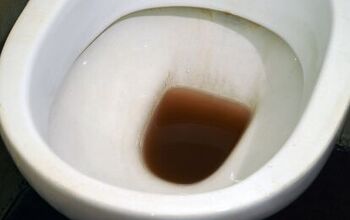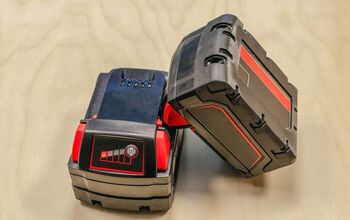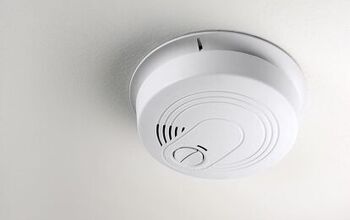Should You Throw Your Mattress Away After Bed Bugs?

Bed bugs can make you feel uncomfortable at home, and they can stick around for longer than you may think. Even without a host, bed bugs can survive for up to a year in some cases, and many even survive treatment. So, should you throw your mattress away after bed bugs?
You don’t have to throw your mattress away if there are no more signs of bed bugs. Bed bugs can bury themselves deep within mattresses, however, so you must encase your mattress in a sealed cover. That way, no remaining bed bugs can escape your mattress and emerge into your home.
Some people prefer throwing their mattresses away, which is fine, but you must label your mattress. That way, everyone who handles it will know about the risk. Follow along as we explore what to do with your mattress after bed bug treatments.
Do You Have To Throw Your Mattress Away If You Have Bed Bugs?
You don’t have to throw your mattress away if you have bed bugs, and it’s not a good idea to do so. That’s because you may inadvertently spread bed bugs throughout your home and give them to whoever interacts with the discarded mattress. For example, you may set the mattress out with your trash before collection day, and someone may take it.
In their mind, they’re getting a free mattress. However, the mattress may still contains bed bugs if you haven’t treated it before pitching it. The person may bring the mattress home and unknowingly infest their space with bed bugs.
Similarly, you may spread bed bugs to other parts of your home while taking it out of the house. Throwing a mattress away won’t solve the issue, as in many cases, bed bugs don’t solely stay on mattresses. That’s especially true if your infestation is severe, in which case they could be anywhere in your home.
Is Your Mattress Safe After Bed Bug Treatment?
Your mattress is safe after bed bug treatment if no bed bugs remain. That said, it’s hard to trust that the problem is totally resolved unless you hire a professional to treat your mattress. The biggest risk is that some bed bugs may remain buried deep within your mattress.
In that case, you may go back to sleeping on your mattress like usual without realizing the problem isn’t over. That’s why professionals recommend covering your mattress after bed bug treatments, to ensure buried bed bugs can’t emerge. You must leave the cover on your mattress for a full year in that case, as bed bugs can live a long time without food.
Some people debate whether it’s even worth doing this, as it may make your mattress noisy and uncomfortable. However, some mattress covers are subtle and comfortable, so it’s worth looking at a few of them. Otherwise, you can get rid of your mattress and buy a new one to get a fresh start.
How To Tell Bed Bugs Are Gone
If knowing whether or not bed bugs are gone was easy, nobody would second-guess getting back into bed. However, bed bugs are as elusive as they are gross and frustrating. You can tell that bed bugs are gone if you follow a few simple steps, such as:
1. Inspect Your Mattress Daily
You cannot tell that bed bugs are gone if you don’t inspect your mattress daily. Carefully look at the mattress for clear indicators of bed bugs, such as eggs and specks of dried blood. Finding live bed bugs is the most clear sign, but a lack of visible bed bugs doesn’t mean they’re gone.
The aforementioned dried blood refers to bed bug feces, which you’re bound to find during an active infestation. Keep track of where these reddish-brown spots are, so you can tell when new ones appear. Finding new specks will indicate that at least a few bed bugs are hanging around.
You must especially look for eggs, because eggs can indicate that the problem is possibly getting worse. Keep track of and remove eggs as you find them, and take note of new eggs. If you find new eggs, then you know that the bed bugs aren’t gone, so you must leave no stone unturned.
2. Look Out For Bites
Bed bug bites aren’t particularly painful, but they are uncomfortable in many cases. However, some people are lucky in that they don’t react to bed bug bites. That said, such people may question if the bed bugs are gone, as they won’t notice getting bitten.
Bed bug bites are small and typically clustered in tight groups, but that’s not always the case. Each bite typically measures roughly 2 millimeters to 5 millimeters and appears red on the outside. The center of the bite may appear darker, but it depends on the person and when they were bitten.
Keep in mind that bed bug bites don’t always appear right away, so you may not see them for a day or two. Finding bites after treating your home for bed bugs can feel incredibly disheartening. However, it’s worth comparing your bites to ones from other common pests if there are no other signs of bed bugs in your home. It may be a false alarm.
3. Schedule A Follow-Up Treatment
Bed bug treatments don’t work overnight, and they sometimes require a few visits. That includes a follow-up when all is said and done, as this can confirm that your nightmare is over. Professionals typically recommend scheduling a follow-up visit for around 2 weeks after the initial bed bug treatment.
This gives the chemicals they used time to work and affect the bed bugs as intended. It can take a while for existing bed bugs to die, and you must also consider that the treatment won’t likely affect the eggs. This means that new bed bugs may emerge in your home after hatching.
It’s also important to adjust your expectations and realize that several weeks' worth of treatments are sometimes needed. The follow-up appointment will tell you whether or not the bed bugs are gone and if your mattress is safe. Otherwise, they may continue the treatments for another few sessions.
How To Throw Away A Mattress That Has Bed Bugs
You can only safely throw away a mattress that has bed bugs if you follow some strict steps. First and foremost, you must completely wrap the mattress in thick layers of plastic or use a mattress cover that’s meant for bed bugs, to ensure no bed bugs can escape.
Upon doing so, you must wrap all the seams with duct tape to seal them tightly. Next, label the mattress to leave nothing to the imagination. For example, you can stick a poster board or a large piece of paper to the mattress that says “bed bugs”.
You may want to mark both sides of the mattress, as someone may not see the other side when moving it. That way, you can protect anyone who encounters the mattress, or else the bed bugs may spread. It will most likely be sanitation workers who handle the mattress, so they must know what they’re dealing with.
Summing It Up
You shouldn’t throw away your mattress after bed bugs unless you want to get a new mattress. However, you should encase your mattress for a year to ensure no remaining bed bugs can emerge. You must label your mattress when disposing of it if it’s infested with bed bugs. That way, anyone who handles it will know about the risks.
Related Guides:

Nick Durante is a professional writer with a primary focus on home improvement. When he is not writing about home improvement or taking on projects around the house, he likes to read and create art. He is always looking towards the newest trends in home improvement.
More by Nick Durante













![10 Best Zero Turn Mowers – [2022 Reviews & Ultimate Buyer's Guide]](https://cdn-fastly.upgradedhome.com/media/2023/07/31/9070522/10-best-zero-turn-mowers-2022-reviews-ultimate-buyer-s-guide.jpg?size=350x220)













